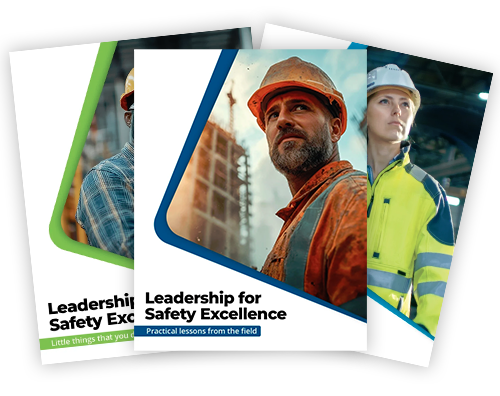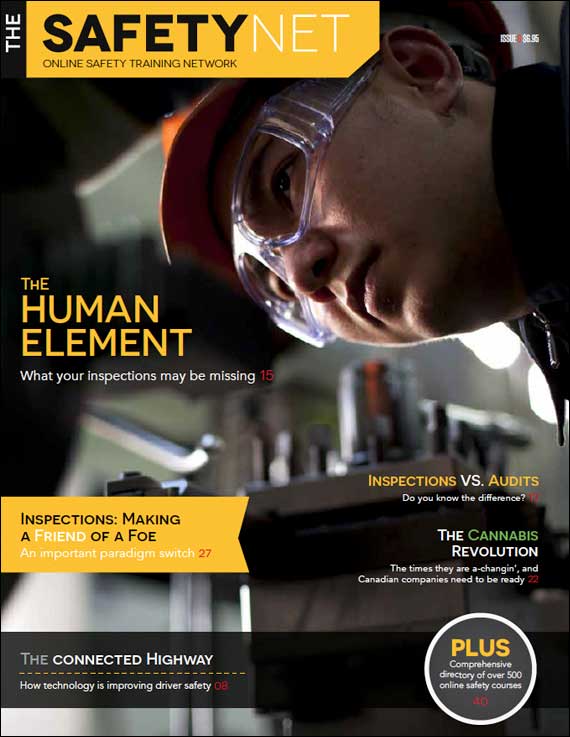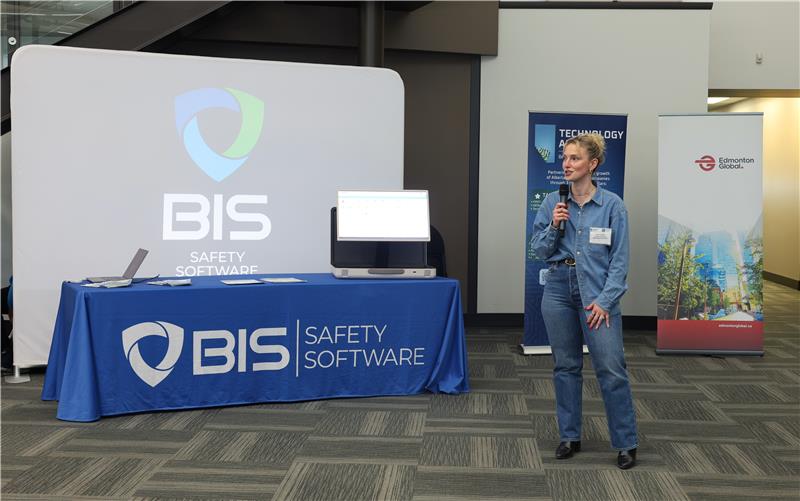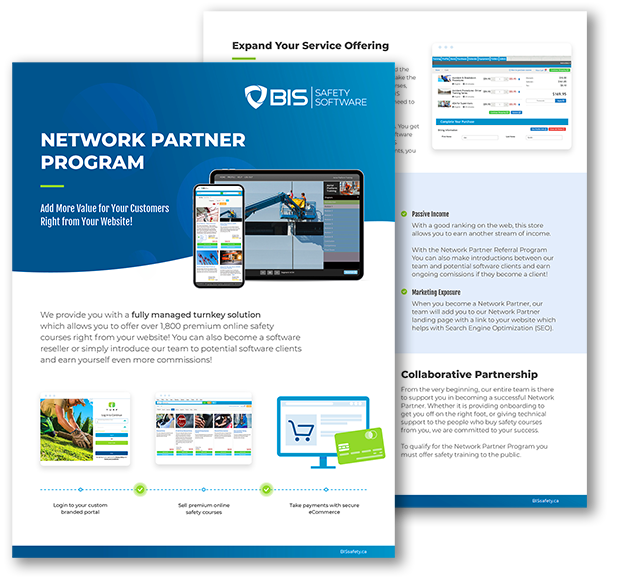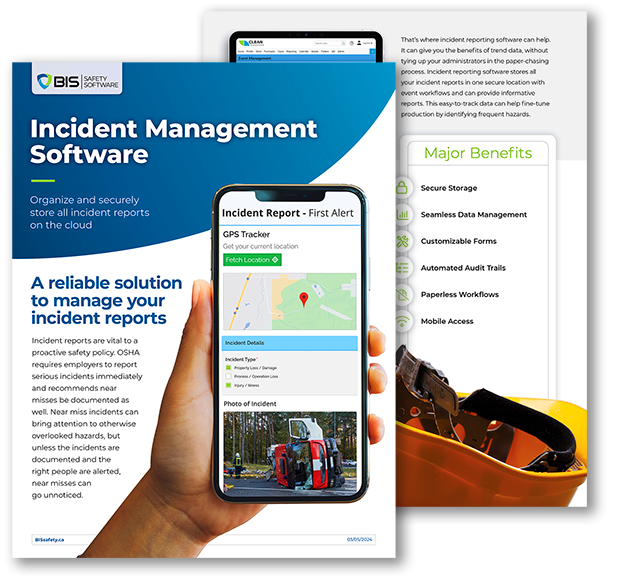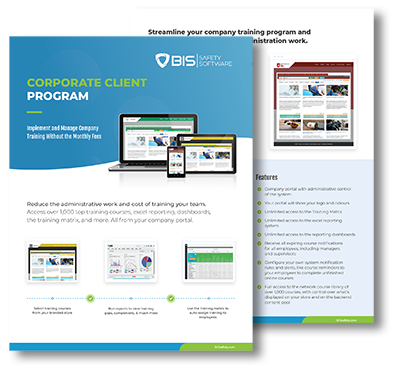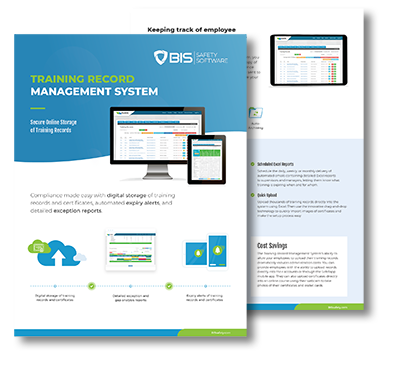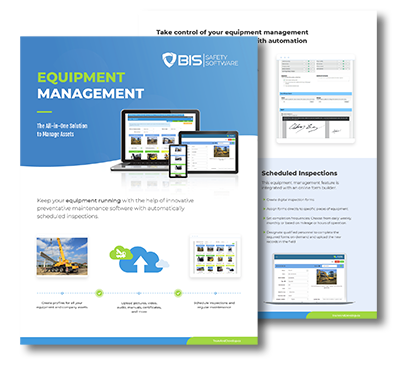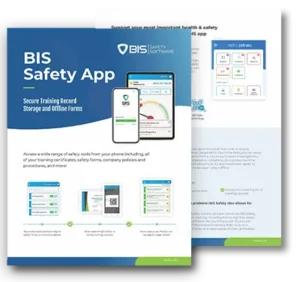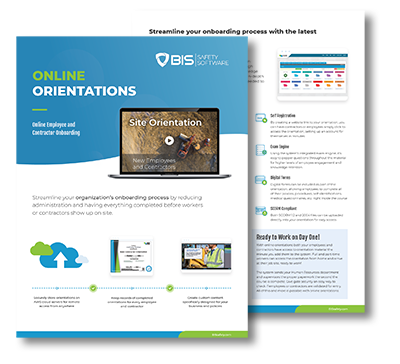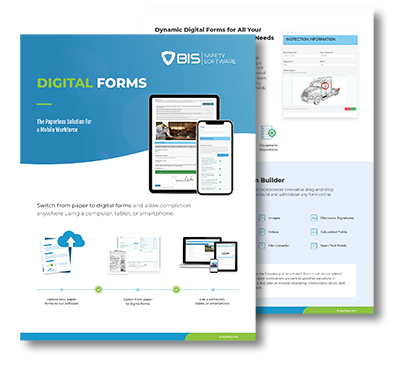WHMIS Refresher Training

A WHMIS refresher helps experienced workers stay sharp by reinforcing hazard recognition, label interpretation, and SDS awareness. It’s a quick, effective way to stay compliant and confident when working with hazardous products.
What’s the Secret to Getting Your Team on the Same Page About Safety?

Strong, accessible documentation is key to safer, more efficient worksites. Learn why it matters, where it fails, and how to build a system that works.
Daily Trip Inspection Training

Home Blog Daily Trip Inspection Training Ensuring Vehicle Safety Before Every Drive Enroll today! By RDadiz Facebook LinkedIn Daily trip inspections are a critical safety measure for commercial drivers and fleet operators. A thorough inspection helps identify potential issues before they lead to accidents, vehicle breakdowns, or regulatory violations. Under NSC Standard 13, drivers must perform these inspections at least every 24 hours, ensuring their vehicles are in safe operating condition. The Daily Trip Inspection Training course equips drivers with the knowledge needed to conduct thorough pre-trip inspections, recognize defects, and comply with regulatory standards. Upon completion, participants receive a QR Code-enabled certificate for instant verification. Why Daily Trip Inspections Matter Routine inspections are required by law and play a crucial role in preventing accidents. A proper trip inspection helps drivers: ✔ Identify mechanical defects before they cause failures ✔ Ensure compliance with NSC Standard 13 ✔ Enhance road safety for themselves and others ✔ Reduce costly repairs and vehicle downtime ✔ Prevent fines and penalties for non-compliance What’s Covered in Daily Trip Inspection Training? 1. Understanding NSC Standard 13 ✔ Overview of daily trip inspection regulations ✔ Responsibilities of drivers and fleet operators ✔ Consequences of skipping inspections ✔ Fines, penalties, and enforcement measures 2. Pre-Trip Inspection Procedures ✔ How to conduct a systematic vehicle inspection ✔ Required documentation and reporting ✔ Identifying minor vs. major defects ✔ Communicating issues to employers and maintenance teams 3. Key Inspection Areas ✔ Cab and dashboard components (lights, gauges, steering, brakes, seatbelts) ✔ Walkaround inspection (mirrors, doors, tires, fuel tank, exhaust system) ✔ Air brake system checks (if applicable) ✔ Cargo and load securement 4. Handling Defects and Compliance ✔ How to recognize common defects and safety risks ✔ Steps to take when identifying a major defect ✔ Reporting defects and arranging for repairs ✔ Keeping accurate logs and inspection records Get Certified Today! Daily trip inspections are essential for road safety, regulatory compliance, and vehicle longevity. The Daily Trip Inspection Training course ensures drivers are equipped to conduct thorough inspections, document defects, and operate vehicles safely. Participants will receive a QR Code-enabled certificate for quick verification. Start your journey towards safer driving, [Enroll in Daily Trip Inspection Training Today]! Follow us! Stay up-to-date with the latest spotlight articles, podcasts, the SafetyNET Magazine, or our book on Leadership for Safety Excellence. All updates will be shared on our social channels, click below to follow us. Facebook Linkedin Related Articles All Posts #EmergencyPreparedness 2025 safety trends 360 Immersive 360immersive 6S Safety accident prevention accidental careers adjustable workstations adult education AI automation AI implementation AI in business AI in operations AI in Safety AI podcast AI strategy AI transformation Alberta safety courses Allan James Moore artificial intelligence asking for help audit findings audit readiness Audit Reporting automation in safety automation strategy avoidable injuries awareness Aztec Safety back strain BambooHR integration behavior-based safety Behavioral Safety behavioural safety biometric sensors BIS Podcast BIS Safety Podcasts BIS Safety Software BIS Safety Spotlight black holes Blame Culture BP Texas City Explosion Brave Leadership Brett Burkard burnout business automation Canadian OHS Canadian safety Canadian safety history Canadian safety standards carbon monoxide Carolynne Heron CCOHS chemical chemical vapors chronic injuries chronic pain cloud-based safety tools Coming Soon community safety programs Competency in Safety complacency in safety Compliance compliance courses Compliance In Canada compliance issues Compliance management Compliance Reporting compliance software compliance tools compliance tracking compliance training compliance vs protection Construction advocacy Construction education Construction industry construction safety construction safety training continuous improvement continuous safety improvement corporate culture corporate training corrective actions crane CSA standards Customer Spotlight Customer Spotlight Kevin Swinden Global Hazmat Safety Culture Hazmat Management Dangerous Goods Competency in Safety Workplace Risk Mitigation BIS Training Clients Canadian EHS customized training daily trip inspection Damage Prevention Dangerous Goods dangerous goods classification Danny Sellers data-driven safety Decision Analysis defect management defect tracking defensive driving DEI in onboarding digital compliance digital forms Digital Hazard Reporting Digital Onboarding digital safety Digital Safety Audits Digital safety systems digital safety tools digital safety transformation Digital Training Tools digital transformation DMS features document control document management system Dr. Joanna Pagonis Dr. Tom Krause driver file management driver training driving instructor program DTRMS e-learning e-learning tools eadership in safety early intervention education technology EHS EHS Adoption EHS Compliance EHS digital solutions EHS Inspections EHS Onboarding EHS software EHS systems EHS tools Einstein electrical safety Emergency Action Plan emergency preparedness emergency response emergency supplies emotional training employee behavior employee engagement employee health Employee onboarding Employee Readiness employee safety employee training Energy Isolation ergonomic consulting ergonomic design ergonomic risks ergonomics Evacuation Procedures evidence collection EWI Works exoskeleton exoskeletons failure analysis fall protection fast onboarding field experience field level hazard assessments field safety field safety assessments field safety services Field Safety Technology Field-Friendly Software Fire Drills fire prevention Fire Safety Training first aid kit first week on the job first workplace injury fleet management fleet safety FLHA engagement FLHA Integration FLHA software FMEA freight Frontline Engagement frontline safety future of work Global Hazmat global onboarding gravitational waves hand injuries handling hazardous materials hands-on training hazard analysis hazard assessment compliance Hazard Awareness hazard communication Hazard Identification hazard prevention hazard recognition Hazardous Energy Control Hazmat Management Health & Safety Podcast health and safety hearing loss prevention hearing protection heavy equipment safety hidden workplace hazards high voltage systems HR automation HR software human factors human in the loop Human Performance human vs machine human-centered design human-centered safety humor in safety ICBC certification identification immersive learning Imposter Syndrome incident data incident investigation incident prevention incident reporting industrial AI Industrial Hygiene industrial safety influence vs control Infrastructure Risk injury consequences injury prevention injury prevention tips injury recovery injury reporting injury response injury response plan instructor development internal audits international workforce invisible dangers ISO standards Jeff Mulligan Jennifer Lastra job site accountability job site hazards job site risks job site safety jobsite readiness Jody Young KBR Safety Training Kevin Swinden labor movement ladder safety Leadership leadership accountability leadership and empathy Leadership in Safety Leadership Management
Virtual Reality, Real Safety

Home Blog Virtual Reality, Real Safety Jennifer Lastra’s Mission to Save Lives Lastra talks psychology, VR, and AI in workplace training. By RDadiz Facebook LinkedIn “Compliance doesn’t equal competence. We have to do better.” Jennifer Lastra started her career as an electrician in the US Navy. She spent years working in shipbuilding and manufacturing as boots on the ground. She worked as a contractor in shipyards, frequently operating in high-risk environments with minimal supervision. This was real work, alongside people who did dangerous jobs every day. Then she saw the gaps, massive gaps in how safety was taught, understood, and retained. “I didn’t even realize how unsafe shipboard construction was until years later. The challenges go beyond just the hazards of working with electricity inside a steel vessel floating on water. And yet, we weren’t taught about self-awareness or situational awareness the way we should have been. We were just thrown in.” Jennifer Lastra Today, Lastra is on a mission to change that. As the Co-Founder and CEO of 360 Immersive, she’s pioneering the use of virtual reality (VR) in safety training. Her firm creates deeply immersive experiences. This is training that forces workers to engage, react, and remember. Her philosophy is simple: traditional training isn’t working. And if the fatality rates prove anything, it’s that the industry is long overdue for disruption. From the Navy to Night Vision to VR After the Navy, Lastra moved into shipbuilding. After that, manufacturing, making night vision goggles for military and emergency responders. She loved the sense of service, helping those who protect others. But eventually, she felt the pull to do something on her own. She wanted to build something. And in 2014, she saw her opportunity: virtual reality. “We started being able to pair cell phones with VR viewers,” she says. “Even if it was just cardboard headsets, I knew this technology had the power to completely immerse someone. And if you can immerse them, you can have the ability to modify their behavior.” Jennifer Lastra But Lastra isn’t a tech person. She never set out to be one. What drew her in wasn’t the hardware, it was the potential. “It was the perfect storm,” she says. “Entrepreneurship, powerful technology, and the chance to fix something I knew was broken.” She took that vision and started building. At first, there were skeptics. Some dismissed VR as a gimmick, a novelty. But as more companies saw the results, they realized she was onto something. “When workers go through VR training, they retain more. They react faster. They make better decisions under pressure,” she says. “It’s not theory, it’s science.” Related read: Do you own a business in the insurance industry? Check out how Artificial Intelligence is transforming the insurance industry. Fixing the Gaps in Safety Training For Lastra, the problem with traditional safety training is that it’s passive. Workers sit through hours of slide decks, printed manuals, and video lectures. They check a box, take a test, and move on. But does any of it stick? “Most safety training today is outdated and ineffective,” she says. “We’re giving workers information, but we’re not engaging them. And when the moment comes, when they’re in a real situation, what do they actually remember?” She experienced the challenge firsthand early in her career. As someone with dyslexia, she struggled to translate technical training into real-world applications. “I could pass any test you threw at me,” she says. “But when I got to the fleet, I had no idea how to apply it.” That disconnect drives her work today. 360 Immersive doesn’t just build training programs, it builds experiences. Using VR, workers are placed in hazardous environments. They react, make decisions, and see the consequences of those decisions play out in real time. “The goal is to meet learners where they are,” she says. “a scenario they’ll never forget. ”Some people learn best through reading, others hands-on, or a combination of both. VR bridges the gap, blending learning styles creating a more effective, engaging, and memorable experience.” And it’s not just about skill development. VR can replicate real-life pressures. Confined spaces, operating machinery under stress, reacting to an unexpected hazard. VR goes beyond technical skills – it’s ideal for simulating low-incident, high-risk scenarios like confined space rescues or warehouse fires, where mistakes have cost lives. “It’s a powerful tool for developing decision-making and critical thinking skills without actual consequences,” Lastra says. “The emotional connection makes training unforgettable and deeply impactful.” The Next Big Fight: Psychological Safety For Lastra, safety training isn’t just about hazard recognition and compliance – it’s about mindset. She believes psychological safety is the most overlooked factor in workplace safety. “Early in my career, I was often the first – or only – woman on the team, which made me feel like an outsider. I didn’t feel safe enough to raise my hand or ask questions. How many people still face this same challenge today?” She argues that fear prevents workers from speaking up about unsafe conditions – fear of asking a “stupid” question, fear of retaliation, fear of rejection. “People don’t speak up if they don’t feel like they belong. If they don’t feel safe,” she says. Her approach integrates psychological safety, mindfulness, and situational awareness into safety training. Instead of just teaching PPE regulations, we have an opportunity to dig deeper to understand, ‘Why aren’t you wearing it?’ or ‘Why did you skip inspecting it?’ Maybe it didn’t fit, or they were rushing to finish a task. Powerful storytelling in VR goes beyond compliance by illustrating the root causes of unsafe behaviors. By immersing learners in realistic, relatable scenarios, they build self-awareness, confidence, and the ability to speak up, take responsibility, and make safer decisions – key elements of a psychologically safe workplace. “If we can create emotional connections to training, we can change behavior. That’s the missing piece.” Jennifer Lastra The Fight for Better Standards Lastra isn’t just battling outdated training methods, she’s fighting complacency. “While yearly numbers fluctuate,



